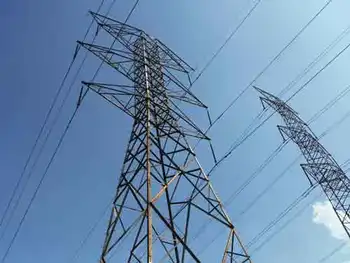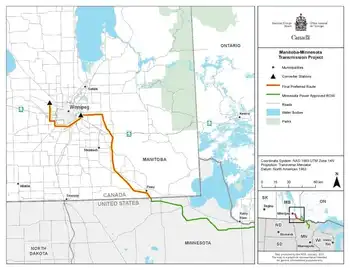Testing tomorrowÂ’s grid today
- Despite competing interests and agendas, members of a utility-sector task force are completing the initial phase of a first-ever attempt to create a long-range transmission plan for the vast Eastern Interconnection power grid that stretches from Saskatchewan to Florida.
The hard part comes after that.
This summer, a series of computer runs will flesh out eight possible scenarios for the future shape of generation and transmission resources in 2020-2030 throughout the interconnection, the synchronized network of high-voltage power lines east of the Rocky Mountains.
Representatives from industry, state regulatory commissions, regional transmission organizations, environmental groups and consumer organizations have created the scenarios to test the impact of a wide range of possible energy policies on the Eastern grid.
The project is funded by two Energy Department stimulus grants. One, for $12 million, went to the Eastern Interconnection Planning Collaborative EIPC, representing grid managers and industry. A second, $14 million grant was awarded to the Eastern Interconnection States Planning Council EISPC, a parallel organization of regulators from 39 states, the District of Columbia and eight Canadian provinces. Both groups come together in the project's steering committee. DOE has funded similar studies in the Western Interconnection and the Texas grid.
"There are eight futures, built around different policy options, or different views of what might happen" to the grid, said consultant David Whiteley, who directs EIPC's work.
There is a "business as usual" case in which natural gas-fired generation is presumed to dominate new construction. Another option projects a 30 percent national renewable portfolio standard leading to many wind and solar power installations.
Still another postulates a takeoff of nuclear power, which could occur either with conventional reactors or small modular models. A "carbon constrained" future is built around a rising price on power plant carbon dioxide emissions. A rapid expansion of demand response and conservation reduces generation and transmission construction, in another scenario.
And there are variations within each scenario to take account of a range of possible economic conditions such as high or low growth of electricity, or an acceleration of electric vehicle sales, or a lowering of costs for new nuclear power, for example. "Economics drives the modeling," Whiteley said.
The result is a "something for everyone" menu with 72 variants that has helped keep the project's stakeholders under the tent, according to some participants.
"None of the decisions has come down to a vote. We have been able to arrive at consensus so far," said Samir Succar, an analyst with the Natural Resources Defense Council who serves on an EPIC committee. "Most people in the process are pleasantly surprised at the array" of options.
Once the scenarios have been run this summer or fall, feeding in predicted costs for different kinds of energy, the stakeholders will choose three "finalists" for further analysis, leading to projected changes in the transmission grid required by those scenarios due in October 2012.
Paring the scenarios down to three will sharply test the consensus, participants say.
"There has been enough room for different groups to be sure that the runs they want to see get done," said one member of the project's steering committee, who declined to be quoted by name. The environmental groups did not like the nuclear run, for example, but they understood that some of the states wanted it, so it was accepted.
"When we get to three scenarios, there will some strong agendas. We'll try to hold it together," this participant said.
"The most difficult thing we'll have to do is picking those scenarios," said Sonny Popowski, the Pennsylvania Consumer Advocate, a member of the steering committee.
But however that tug-and-pull is resolved, the planning process has already produced dividends, just by getting so many participants in a room for close-up discussions of how their parts of the grid work, many participants agree.
Regional grid organizations have looked for the first time at how their 10-year transmission plans required by Federal Energy Regulatory Commission policies fit together.
"From our perspective, it has already been a fantastic success," said Lauren Azar, a Wisconsin Public Service Commission member and the first president of EISPC. "Just getting that group together on our visions for the future is going to help the infrastructure development of our nation." State commissioners are seeing the best practices of their peers, said Azar's policy adviser, Brian Rybarik.
Some state commissioners had never been exposed to transmission planning processes, Azar said. Now they have. "They've learned what scenario building is about and how you move forward in a world of uncertainty," she said. That is a big step at a time when federal energy policies are adrift and transmission rules are being fought over by state and regional interests.
"States are looking at this issue at a very high level," one participant said. "My sense is that DOE would like this process to continue," he said. So would some of the states. "But there's a question of where the funds would come from," he said. One of the ongoing issues concerns the assumed future costs of competing kinds of electricity generation.
The wind energy sector has protested that the capital cost data for new wind generation are too old and too high, and don't reflect current trends.
The wind power cost to be used in this summer's computer runs is more than $2,400 per kilowatt, which wind industry officials say is much higher than current published costs, one participant said. That tilts the analysis against a larger build-out of wind energy and, in turn, would affect the assumptions about the future construction of transmission.
"We're asking folks to look at the actual numbers," said Denise Bode, CEO of the American Wind Energy Association. "We're participating in that process. We're hopeful that the numbers they come up with will be correct numbers. I'm going to ask that the current facts be part of what they look at."
"There are some tensions with wind developers," said one steering committee member. "The people in the Northeast states are deathly against paying for Western wind, and some wind developers in the Dakotas and Kansas that want to be the 'Saudi Arabia of wind.' They're never going to agree." The fairest approach for the next steps of analysis is to use consistent data on energy prices from all sources that are used in the DOE's Energy Information Administration models, this participant said.
"We needed to respect the integrity of the database," Azar said.
Another lurking issue is the competition between current generation and transmission owners, and independents who are trying to break into existing electricity markets. This issue is at the center of a crucial rule expected soon from FERC governing allocation of costs for new high-voltage transmission lines and the "right of first refusal" that existing transmission owners have to construct new lines called for regional planning organizations.
FERC's ruling may come in June or July, and the commission may decide to separate the "right of first refusal" issue and deal with that in a separate ruling, some attorneys close to the issue speculate.
Whiteley said there is clearly a debate in Washington about who should build out the grid, the independents or the incumbents. But the EIPC planning process isn't trying to referee that fight.
"This is not about who builds it. It's not about siting or cost allocation. It's about what the future might look like, so that both the incumbents and independents — the builders of resources — can look at the results" and draw their conclusions, Whiteley said. The scenarios are intended to instruct policymakers on the likely outcomes of the choices on state and federal agendas — what are the implications of a carbon price or changes in the prices of natural gas or nuclear power — he said. The results of the three final scenarios will bind no one, and that undermines the process, some skeptics say. The lines of division and the regional rivalries within the interconnection run deep. Calling the network "Balkanized" may libel the Balkans, one participant said. Consensus can only stretch so far in that environment.
Susan Tomasky, president of AEP Transmission, part of American Electric Power, an advocate of expanded transmission networks, said she remains concerned that the current roadblocks to greater transmission flows across regions will not be settled. "So far, we haven't seen much promise that's going to happen," she said.
But if the consensus holds, the Eastern Interconnection process may point toward common paths for transmission development, some participants said.
"There will be three maps with lines on them," Azar said. "I expect that if there is a line on all three maps, somebody in the market will submit applications to their respective states to build that line."
Related News

Yukon eyes connection to B.C. electricity grid
WHITEHORSE - Yukon's energy minister says Canada's push for more green energy and a net-zero electricity grid should spark renewed interest in connecting the territory's power to British Columbia.
Minister of Energy, Mines and Resources John Streicker says linking the territory's power grid to the south would help with the national move to renewable energy, support the mineral extraction required for green projects, and improve northern energy and Arctic security.
"We're getting to the moment in time when we will want an electricity grid which stretches from coast to coast to coast. … I think that the moment is coming for this…




